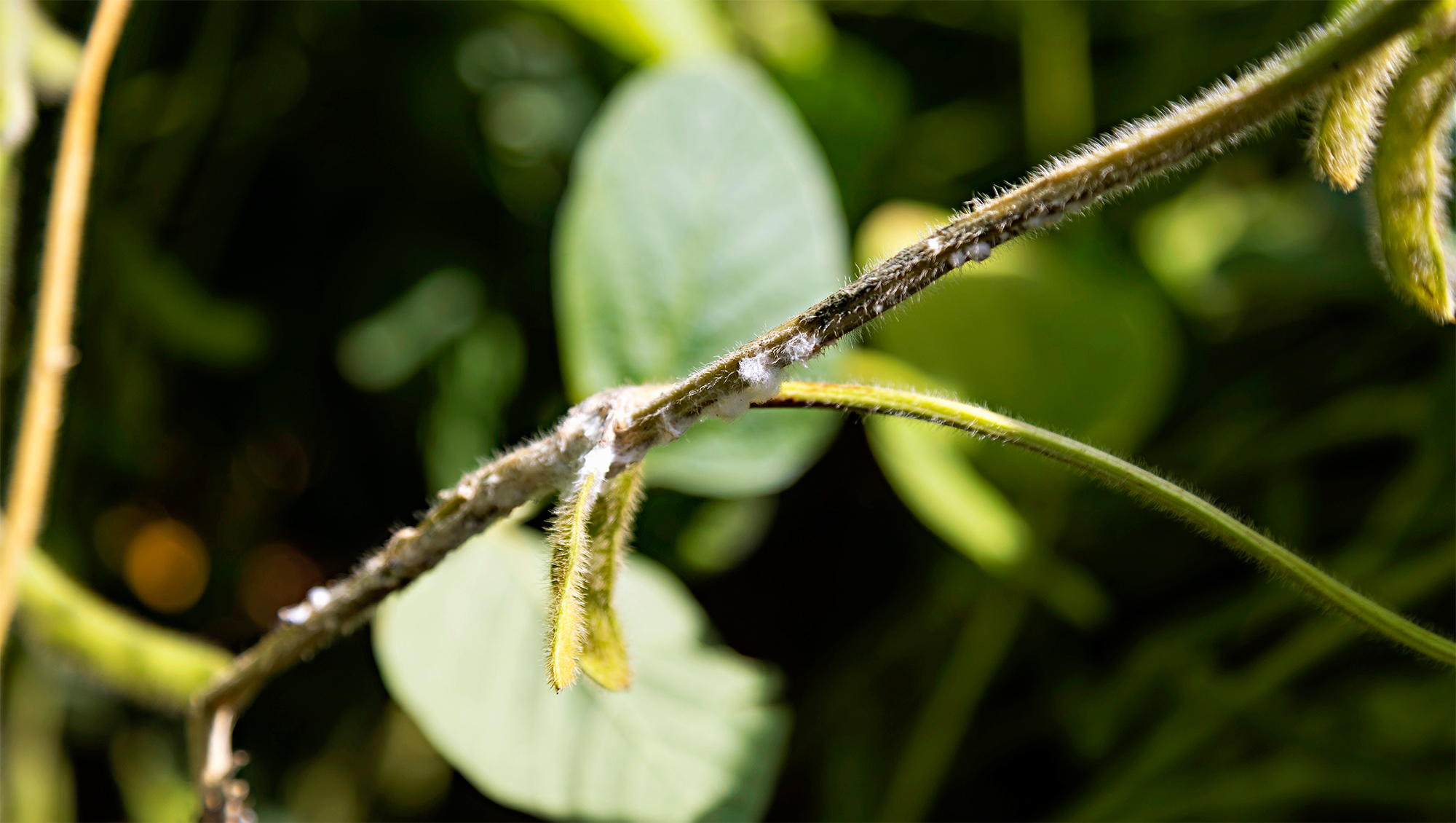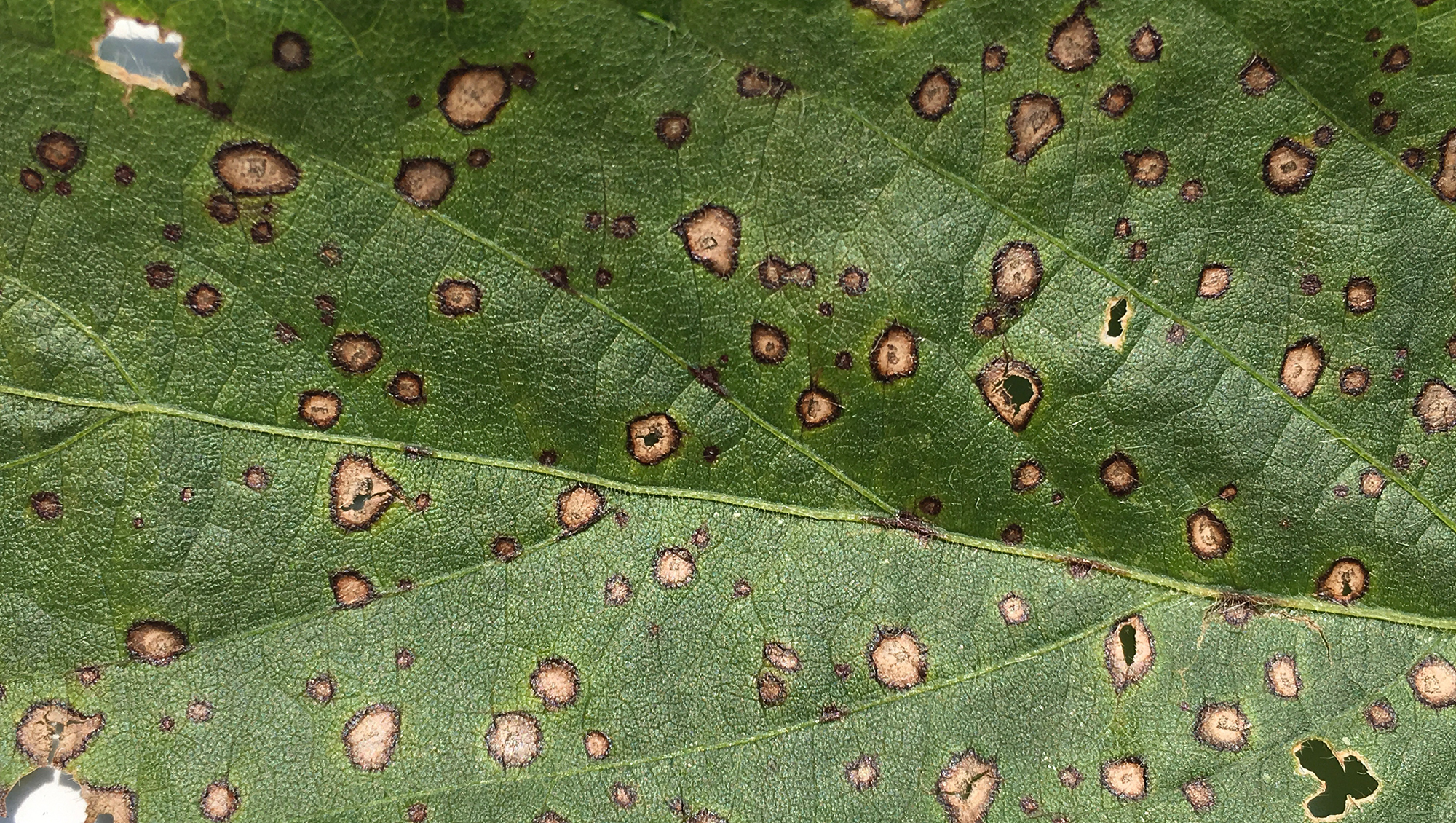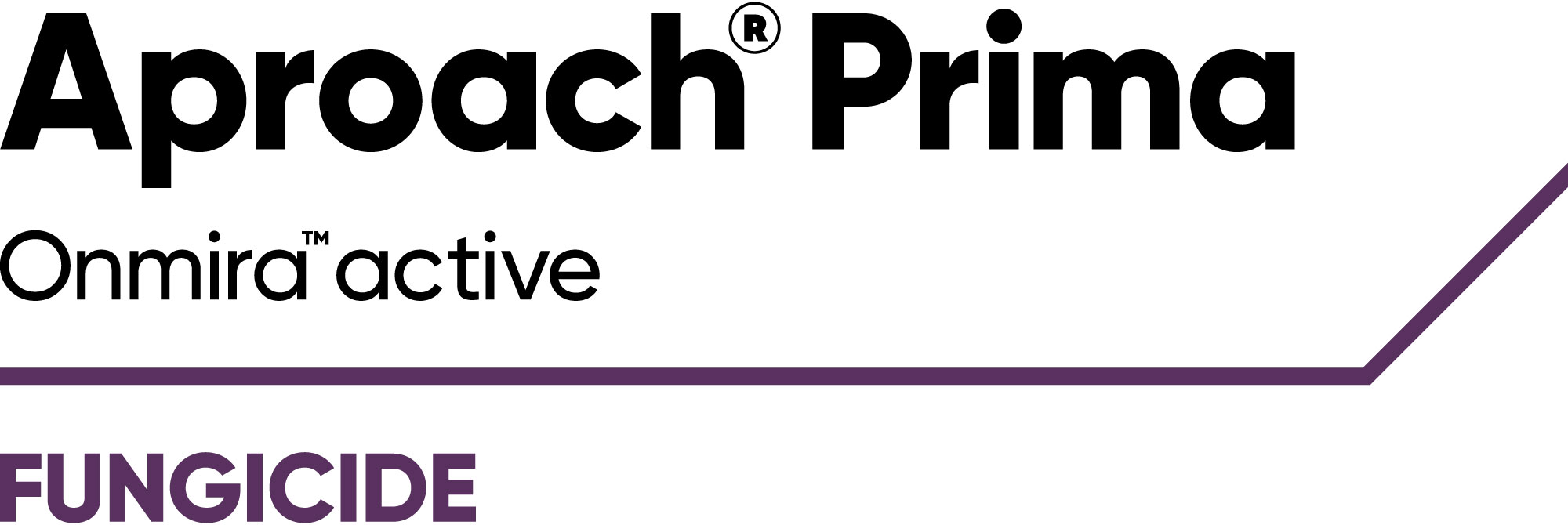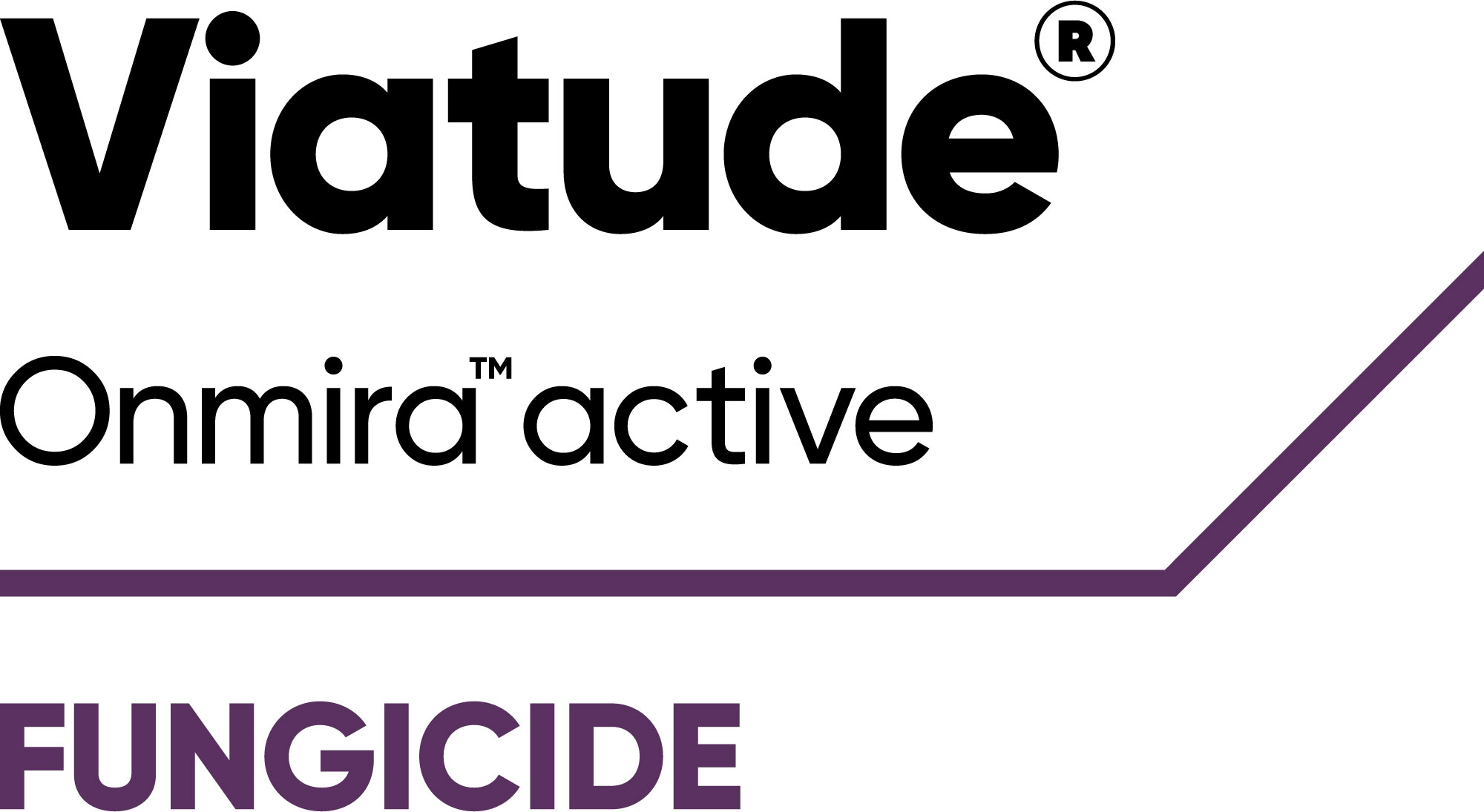Defense Against White Mold and Frogeye Leaf Spot

Frogeye leaf spot and white mold in soybeans can cause substantial yield losses if not properly managed. Millions of soybean acres across the U.S. suffer from these diseases each year. Frogeye leaf spot thrives in warm, moist conditions, while white mold favors cool, wet environments. Usually by the time the diseases show visible signs, a good deal of damage has already been done. Let’s take a closer look at white mold and frogeye leaf spot and some of the latest strategies to deal with these threats.

Any farmer who has had white mold in their soybeans knows the seriousness of the disease and how quickly it degrades yields. For every 10% increase in white mold incidence, an estimated yield loss of 2 to 5 bushels per acre can occur. Severe cases can cause around 50% yield loss.1 White mold can be found throughout the U.S. in all soybean-producing regions. White mold risk peaks in areas with long periods of cool, wet weather, such as parts of Wisconsin, Iowa and northern parts of other states including Indiana.
According to the Purdue University Extension, white mold commonly emerges between July and August as soybean plants start to flower. Early signs present as water-soaked lesions on stems, petioles and pods. As the disease continues, the lesions eventually appear bleached and circle the stem. Fluffy white mycelium may grow from the bleached lesions. Small, black, pellet-like structures, called sclerotia, may also form on or in the stem. These sclerotia can survive harsh winter conditions and remain viable in the soil for several years. In its final stages, white mold causes the leaves to turn brown and the entire plant dies.2

Frogeye leaf spot, another serious threat to soybeans, can cause yield losses greater than 30%.3 This disease occurs in soybean-growing regions throughout the U.S. It has become a particular threat in the North Central Region, including in Illinois, Indiana, Iowa and Missouri. The warm, humid weather of June through August, when it’s 70° to 80°F, is ideal for frogeye leaf spot.3
As noted by the North Dakota State University Extension, the first signs of the disease appear as small, dark, water-soaked spots on the upper side of the leaves, often not showing until two weeks after infection. As the lesions progress, the center will change in color from gray to brown to tan, with the border becoming red or purple. Under the proper conditions, the center of the lesions may take on a fuzzy gray appearance on the underside of the leaf. Lesions may merge together as they grow in size and can also appear on stems, pods and seeds. The fungus can remain viable for at least two years, overwintering as filamentous fungal growth in infested soybean residue.3
An integrated approach to controlling white mold and frogeye leaf spot includes crop rotation, planting resistant varieties and timely fungicide applications. By adopting an integrated approach, farmers can more effectively manage these and other diseases, leading to healthier crops and improved yield potential.
Both white mold and frogeye leaf spot respond to crop rotation as a form of control. Planting a non-host crop at least every other year — or even two years — reduces chances of a return. Crop rotation can provide other benefits as well. Corn adds organic matter from its roots and stalks, improving soil structure and fertility. Cereal rye and winter wheat can improve nitrogen retention in the soil. Crop rotation can also reduce insect pressure by removing the pests’ food source and fostering populations of natural predators.
Select high-quality seed with resistance to white mold and frogeye leaf spot. The level of resistance can vary from one variety to another. Growers may need advice from seed company representatives to identify which varieties best fit their situation.
Fungicides offer a measure of defense against both white mold and frogeye leaf spot. Corteva Agriscience has two fungicides designed to provide protection against these yield-inhibiting diseases, highlighted to the right.

Aproach® Prima fungicide, a broad-spectrum fungicide for control of foliar and soil-borne plant diseases, provides preventive, curative and systemic activity. It includes two active ingredients: Onmira™ active (picoxystrobin, Group 11) and cyproconazole (Group 3). The combination provides broader disease control, especially against fungicide-resistant diseases like frogeye leaf spot. Aproach Prima quickly reaches and penetrates stems and leaves for systemic protection. Aproach Prima is rainfast within one hour with residual protection for up to three weeks. Its preventative and curative modes of action allow for a greater application window, plus it has been shown to improve plant health and increase yield.

Viatude® fungicide contains one of the strongest MOAs against yield-limiting white mold: Onmira active (picoxystrobin, Group 11). It also includes prothioconazole, a Group 3 fungicide, for added white mold protection. With four movement properties, Viatude’s preventative and curative actions can quickly surround, penetrate and protect leaves and stems. It features rapid absorption into the plant and becomes rainfast in one hour after application. Viatude maximizes yield potential in the presence or absence of diseases, with a +3.6 bu/A yield potential over untreated soybeans.4
Though white mold and frogeye leaf spot present problems, with the help of crop rotation, resistant soybean varieties and fungicides like Aproach Prima and Viatude, they don’t have to overwhelm your customers’ fields.
1 “White Mold (Sclerotinia Stem Rot) of Soybean,” South Dakota State University Extension, February 10, 2022, https://extension.sdstate.edu/white-mold-sclerotinia-stem-rot-soybean.
2 Audrey Conrad and Darcy Telenko, “Diseases of Soybean White Mold,” Purdue University Extension, April 2022, https://extension.purdue.edu/extmedia/BP/BP-43-W.pdf.
3 “Frogeye Leaf Spot of Soybean,” North Dakota State University Extension, accessed April 3, 2025, https://www.ndsu.edu/agriculture/sites/default/files/2025-03/pp2076.pdf.
4 Yield potential based on 2024 internal trial data vs. untreated with soybeans at $10.00 per bushel.
™ ® Trademarks of Corteva Agriscience and its affiliated companies. Aproach® Prima and Viatude® are not registered for sale or use in all states. Contact your state pesticide regulatory agency to determine if a product is registered for sale or use in your state. Onmira™ is a registered active ingredient. Always read and follow label directions. © 2025 Corteva. 025755 LC (05/25)